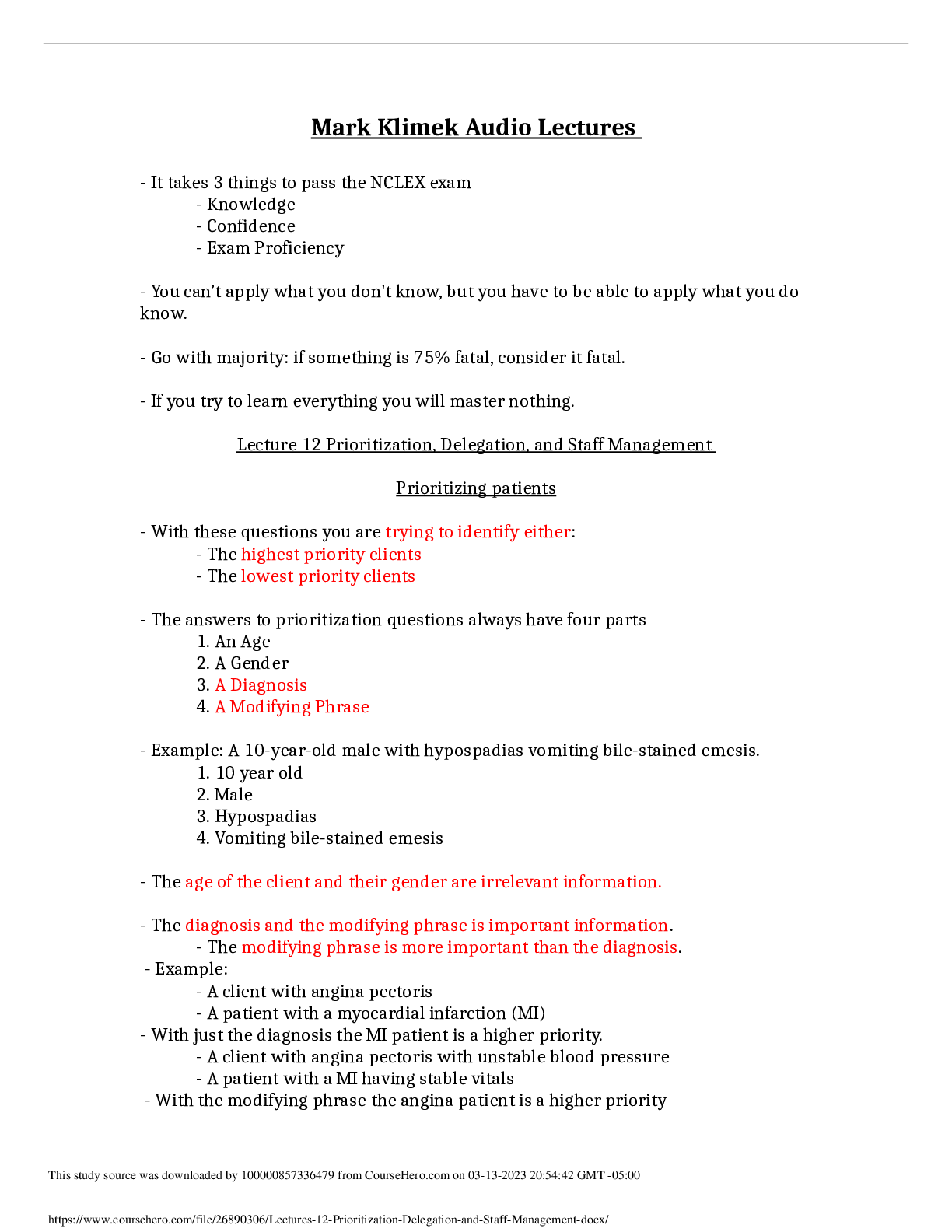NCLEX SHOCK, MODS QUESTIONS WITH CORRECT ANSWERS
Document Content and Description Below
A patient has a spinal cord injury at T4. Vital signs include falling blood pressure with bradycardia. The nurse recognizes that the patient is experiencing: a. a relative hypervolemia. b. an absol ... ute hypovolemia. c. neurogenic shock from low blood flow. d. neurogenic shock from massive vasodilation. Correct Answer Neurogenic shock from massive vasodilation Rationale: Neurogenic shock results in massive vasodilation without compensation as a result of the loss of sympathetic nervous system vasoconstrictor tone. Massive vasodilation leads to a pooling of blood in the blood vessels, tissue hypo perfusion, and, ultimately, impaired cellular metabolism. Clinical manifestations of neurogenic shock are hypotension (from the massive vasodilation) and bradycardia (from unopposed parasympathetic stimulation). When caring for a patient in acute septic shock, what should the nurse anticipate? a- Infusing large amounts of IV fluids b- Administering osmotic and/or loop diuretics c- Administering IV diphenhydramine (Benadryl) d- Assisting with insertion of a ventricular assist device (VAD) Correct Answer Infusing large amounts of IV fluids Rationale: Septic shock is characterized by a decreased circulating blood volume. Volume expansion with the administration of IV fluids is the cornerstone of therapy. The administration of diuretics is inappropriate. VADs are useful for cardiogenic shock not septic shock. Diphenhydramine (Benadryl) may be used for anaphylactic shock but would not be helpful with septic shock. A 78-year-old man has confusion and temperature of 104° F (40° C). He is a diabetic with purulent drainage from his right heel. After an infusion of 3 L of normal saline solution, his assessment findings are BP 84/40 mm Hg; heart rate 110; respiratory rate 42 and shallow; CO 8 L/minute; and PAWP 4 mm Hg. This patient's symptoms are most likely indicative of: a. sepsis. b. septic shock. c. multiple organ dysfunction syndrome. d. systemic inflammatory response syndrome. Correct Answer Septic Shock Rationale: Septic shock is the presence of sepsis with hypotension despite fluid resuscitation along with the presence of inadequate tissue perfusion. To meet the diagnostic criteria for sepsis, the patient's temperature must be higher than 100.9° F (38.3° C), or the core [Show More]
Last updated: 3 years ago
Preview 1 out of 8 pages

Buy this document to get the full access instantly
Instant Download Access after purchase
Buy NowInstant download
We Accept:

Reviews( 0 )
$9.50
Can't find what you want? Try our AI powered Search
Document information
Connected school, study & course
About the document
Uploaded On
Dec 14, 2022
Number of pages
8
Written in
All
Additional information
This document has been written for:
Uploaded
Dec 14, 2022
Downloads
0
Views
106

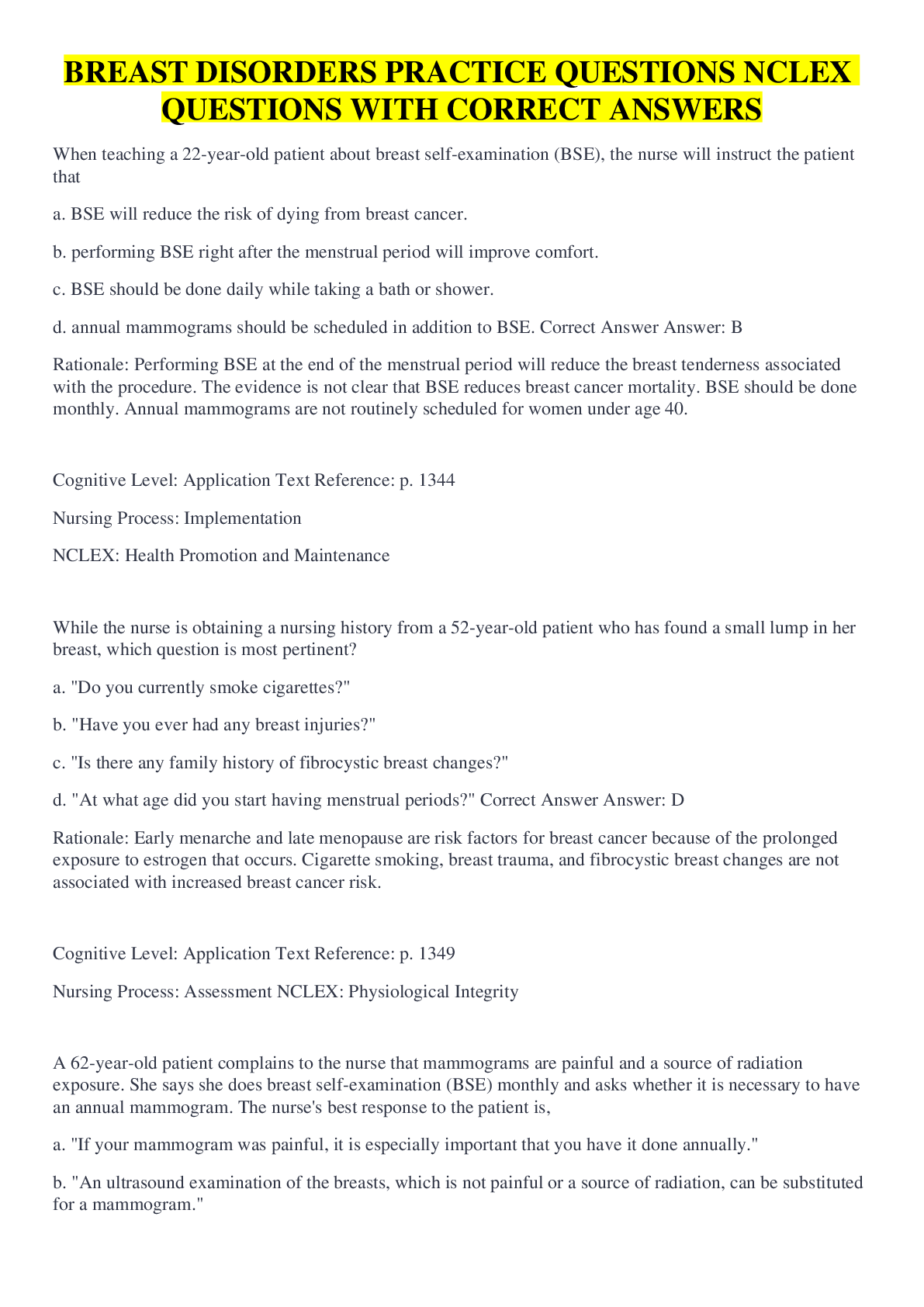



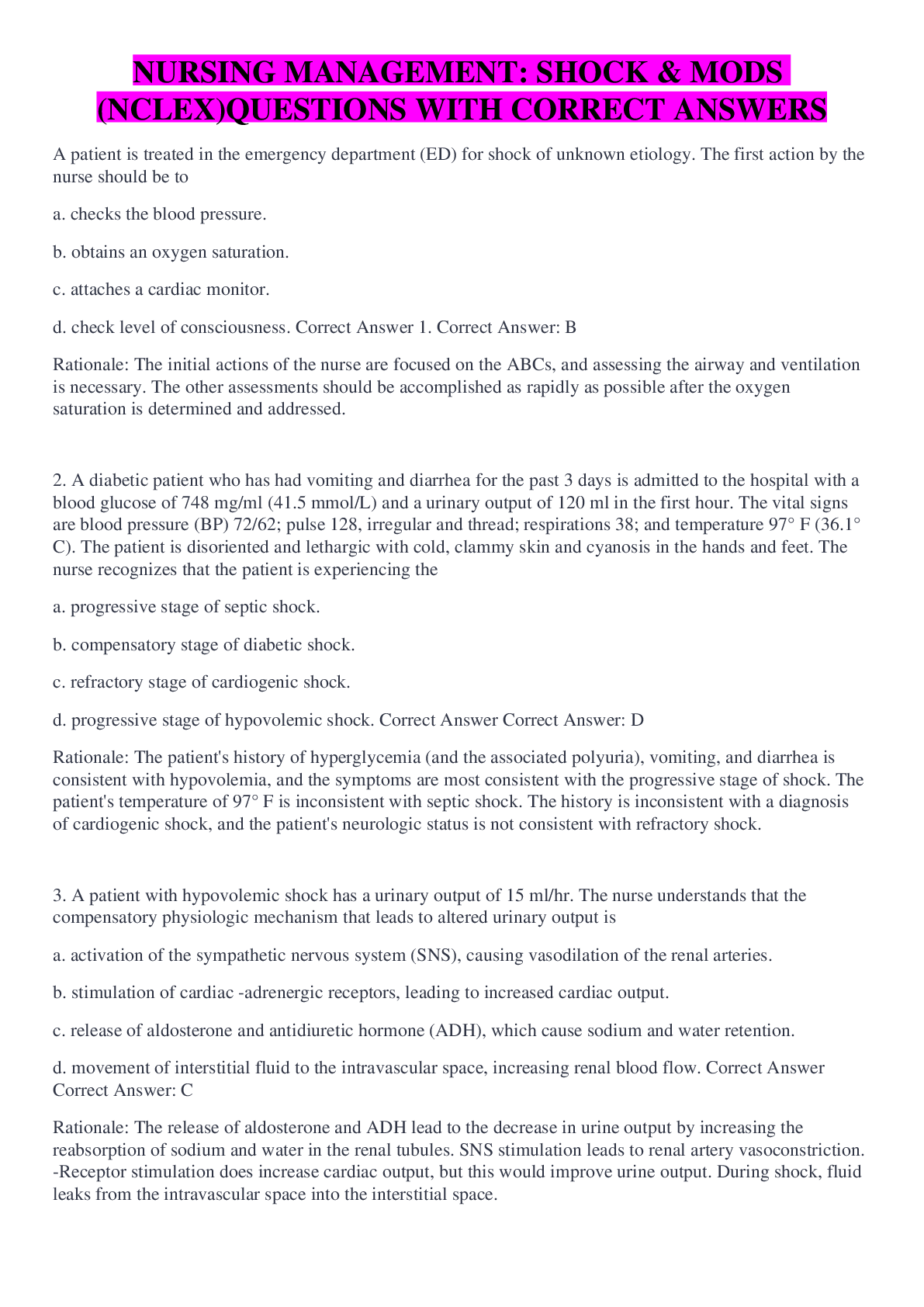

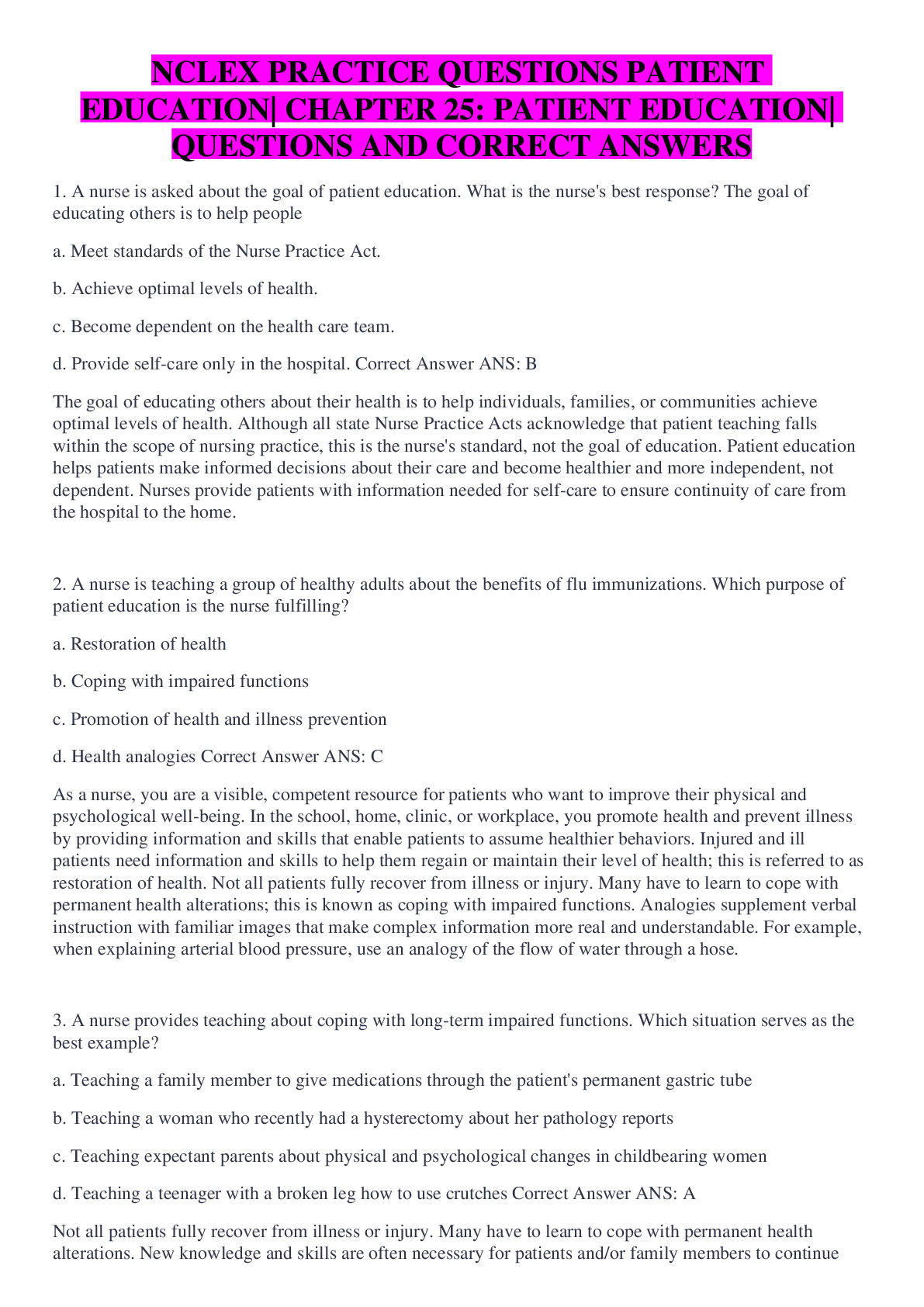

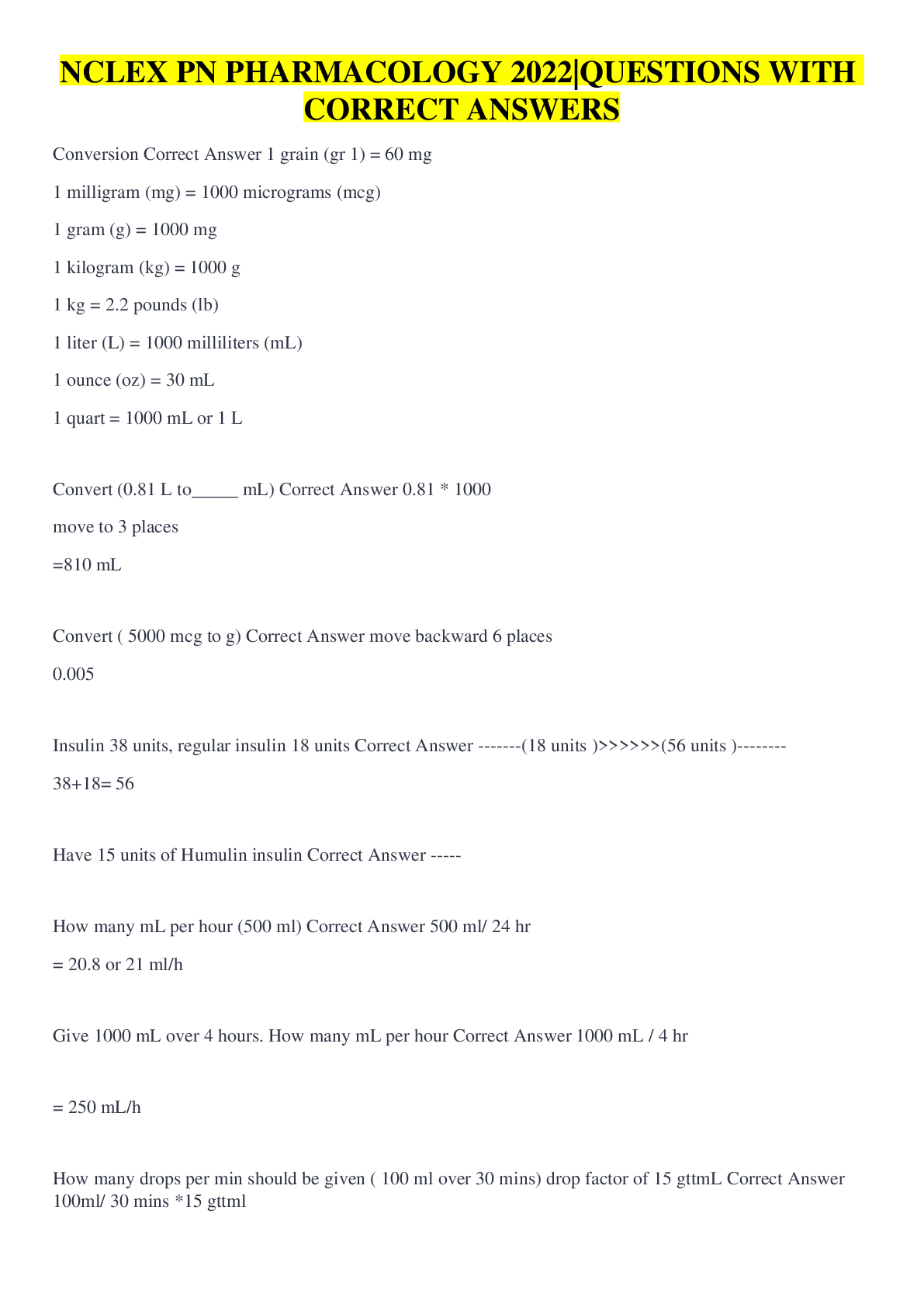
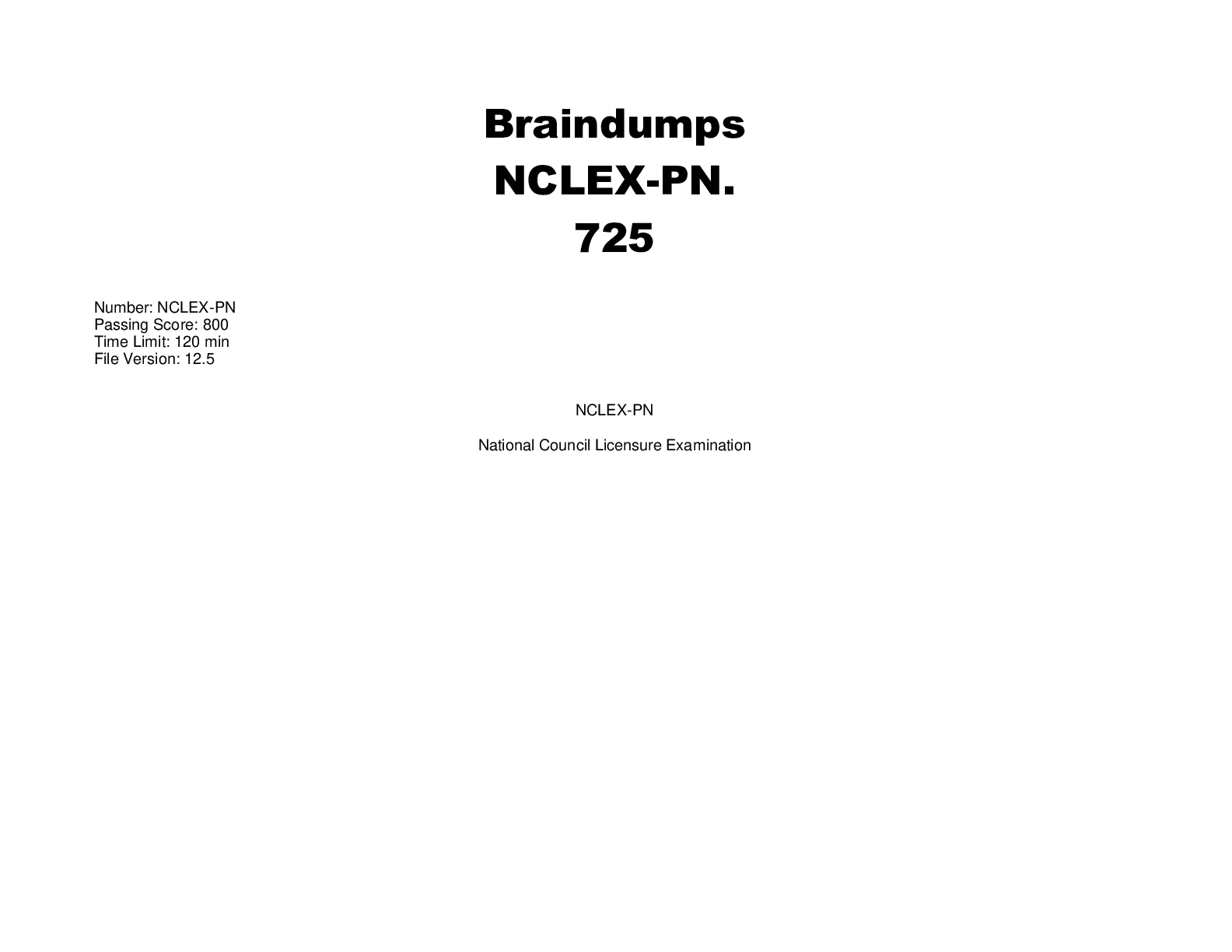

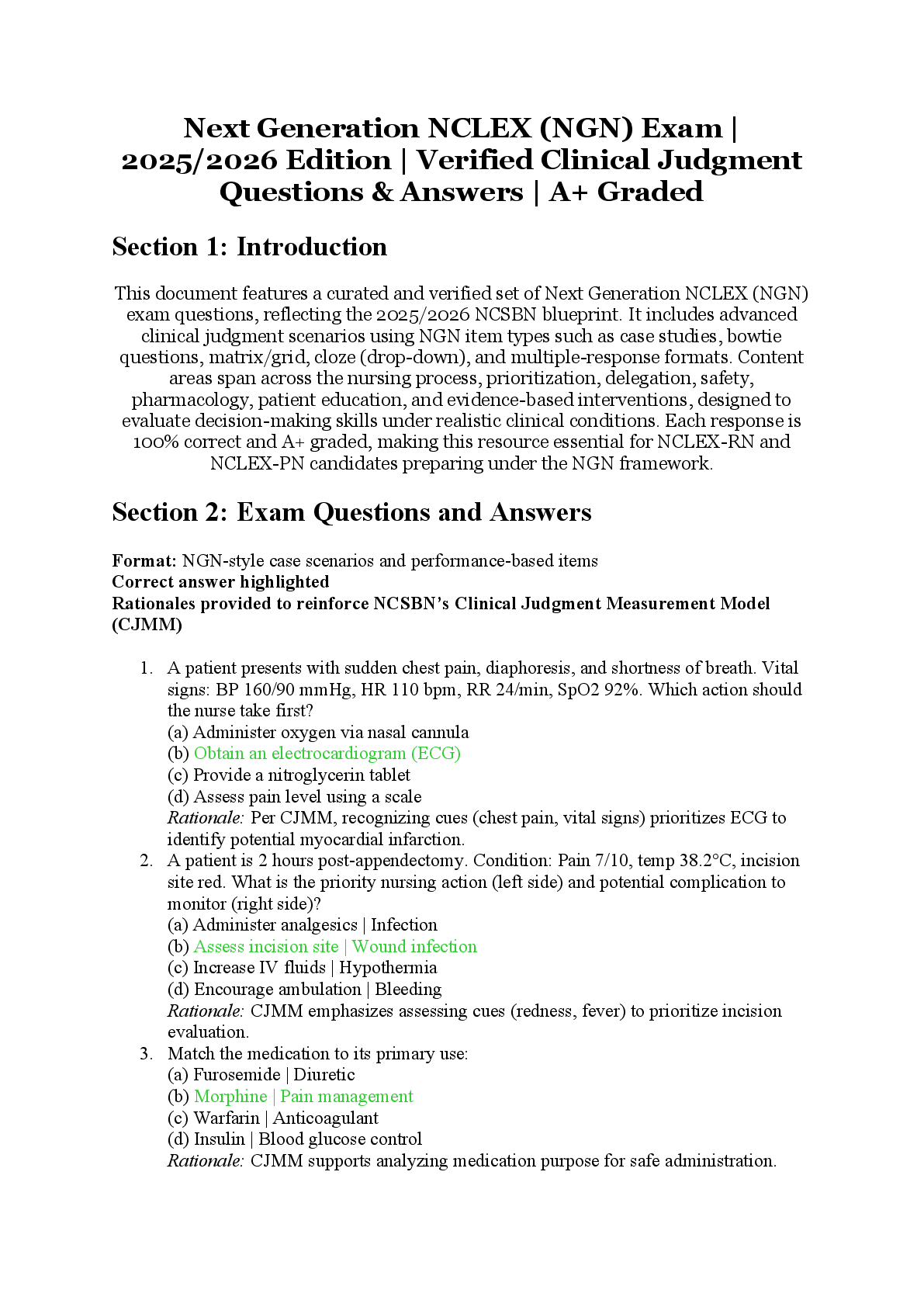
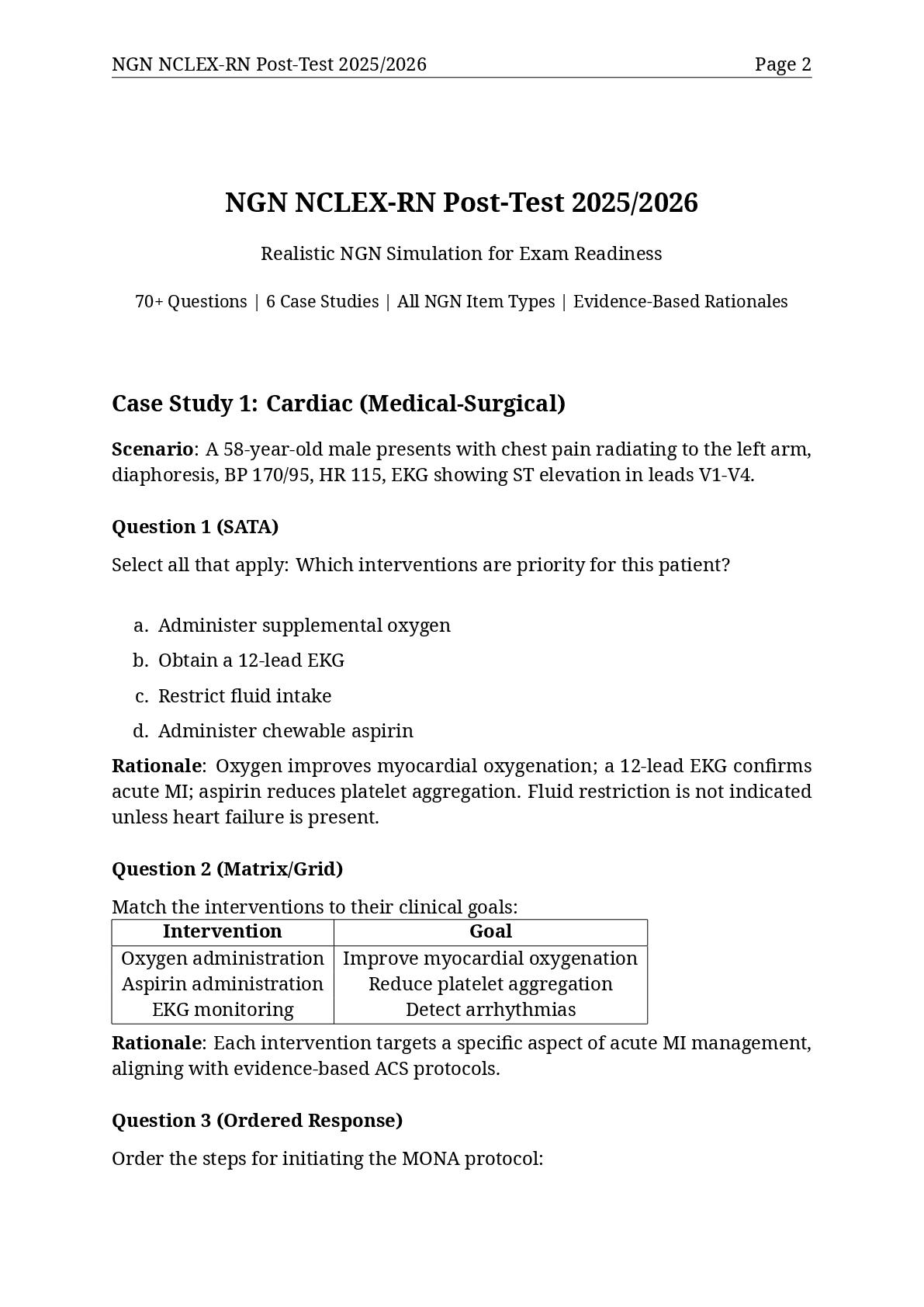
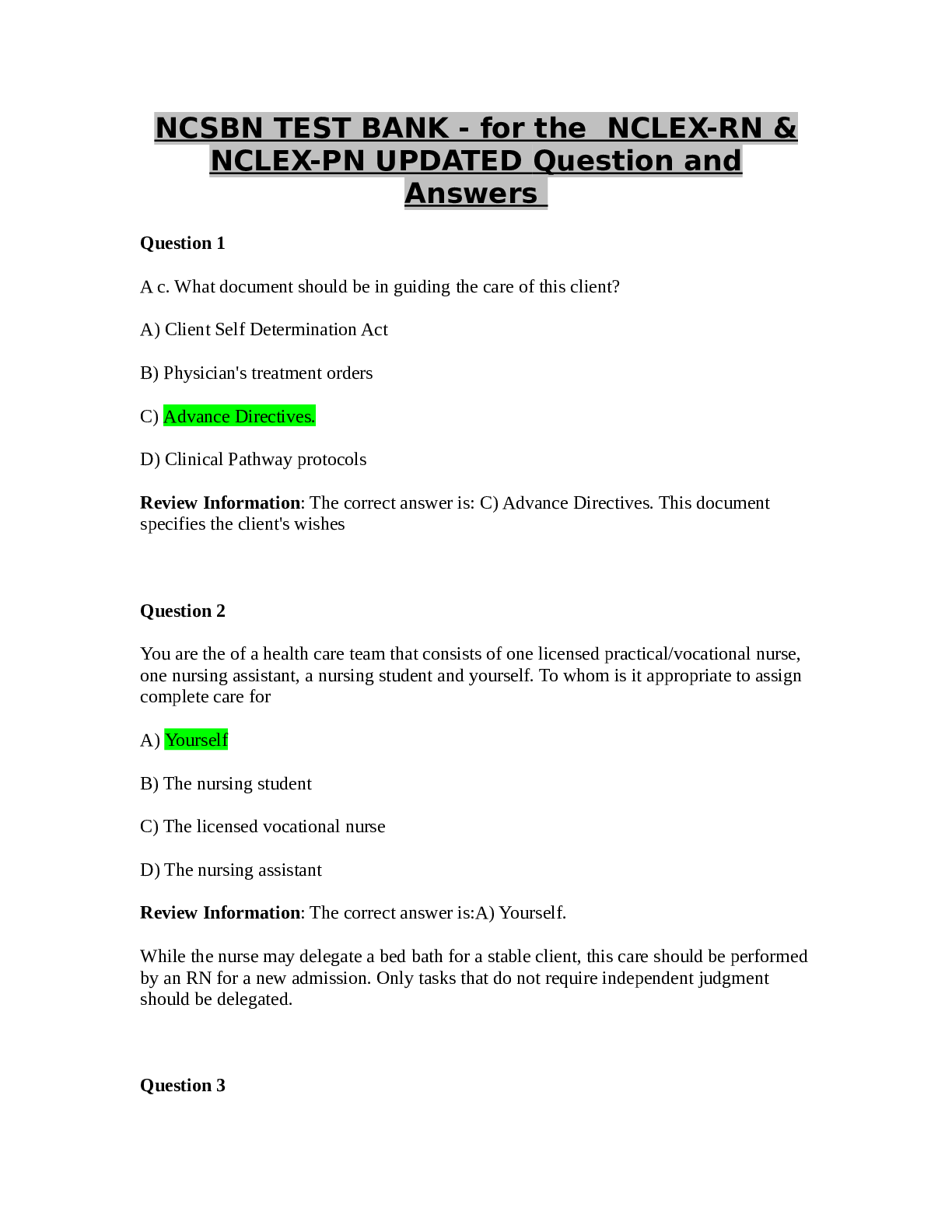
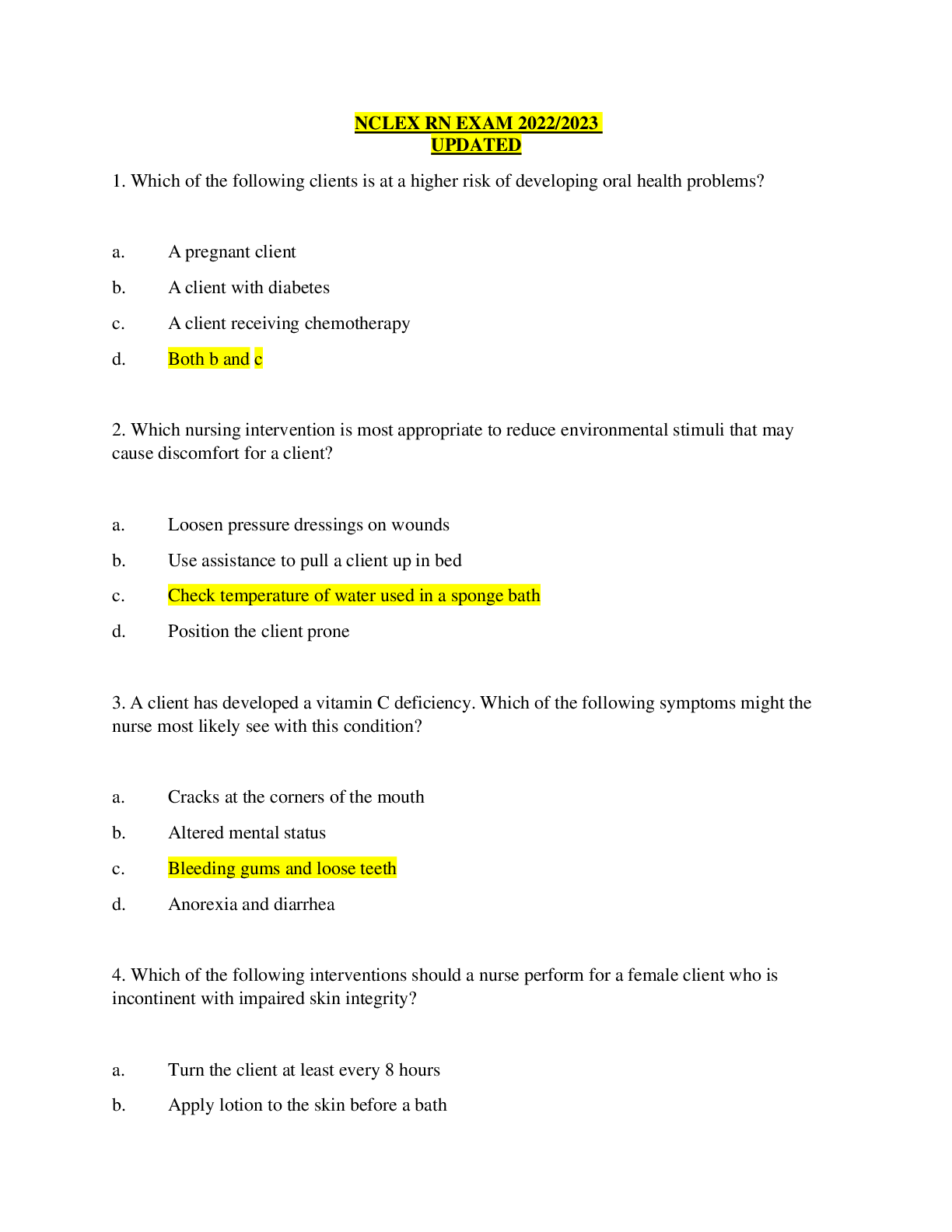
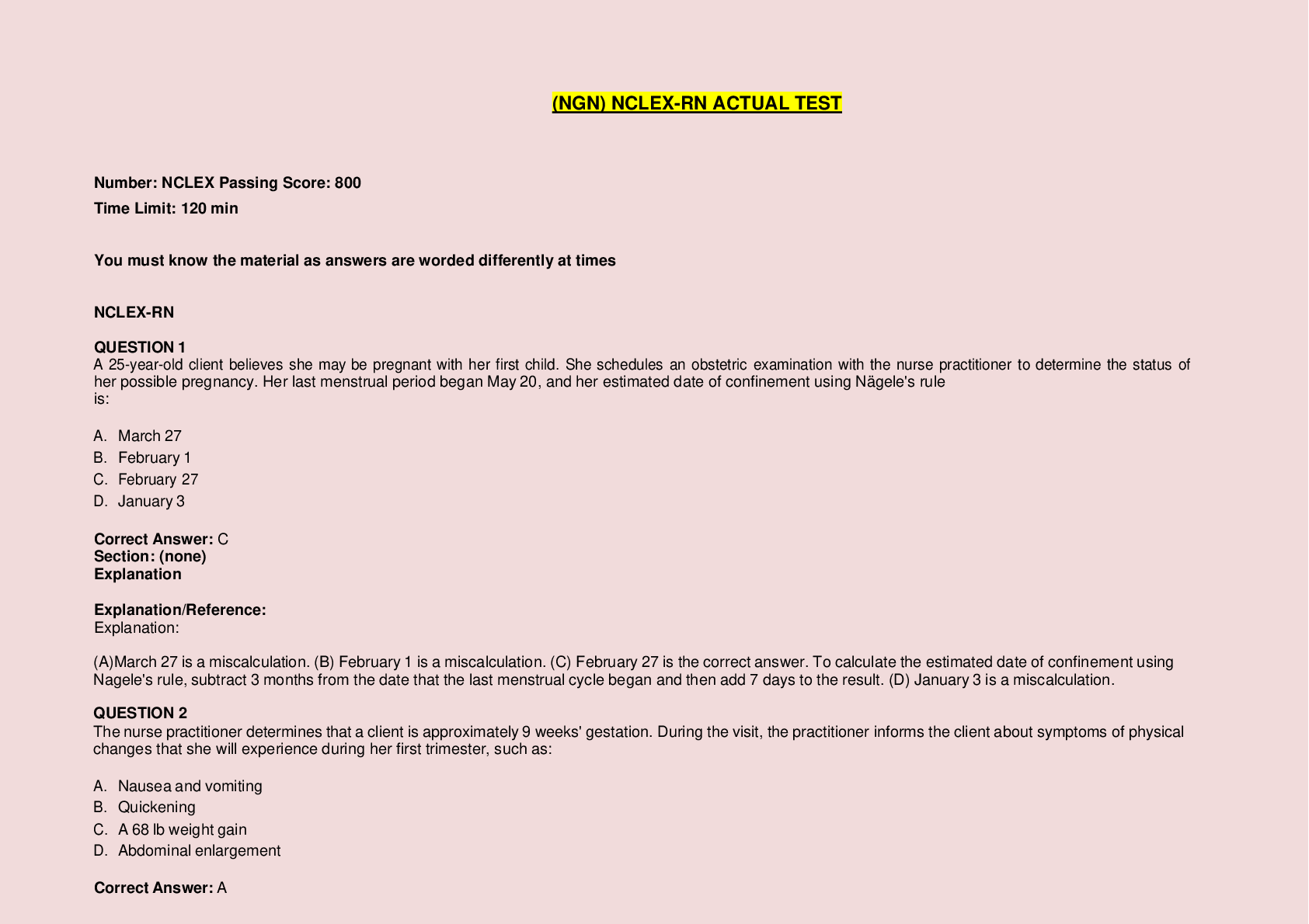
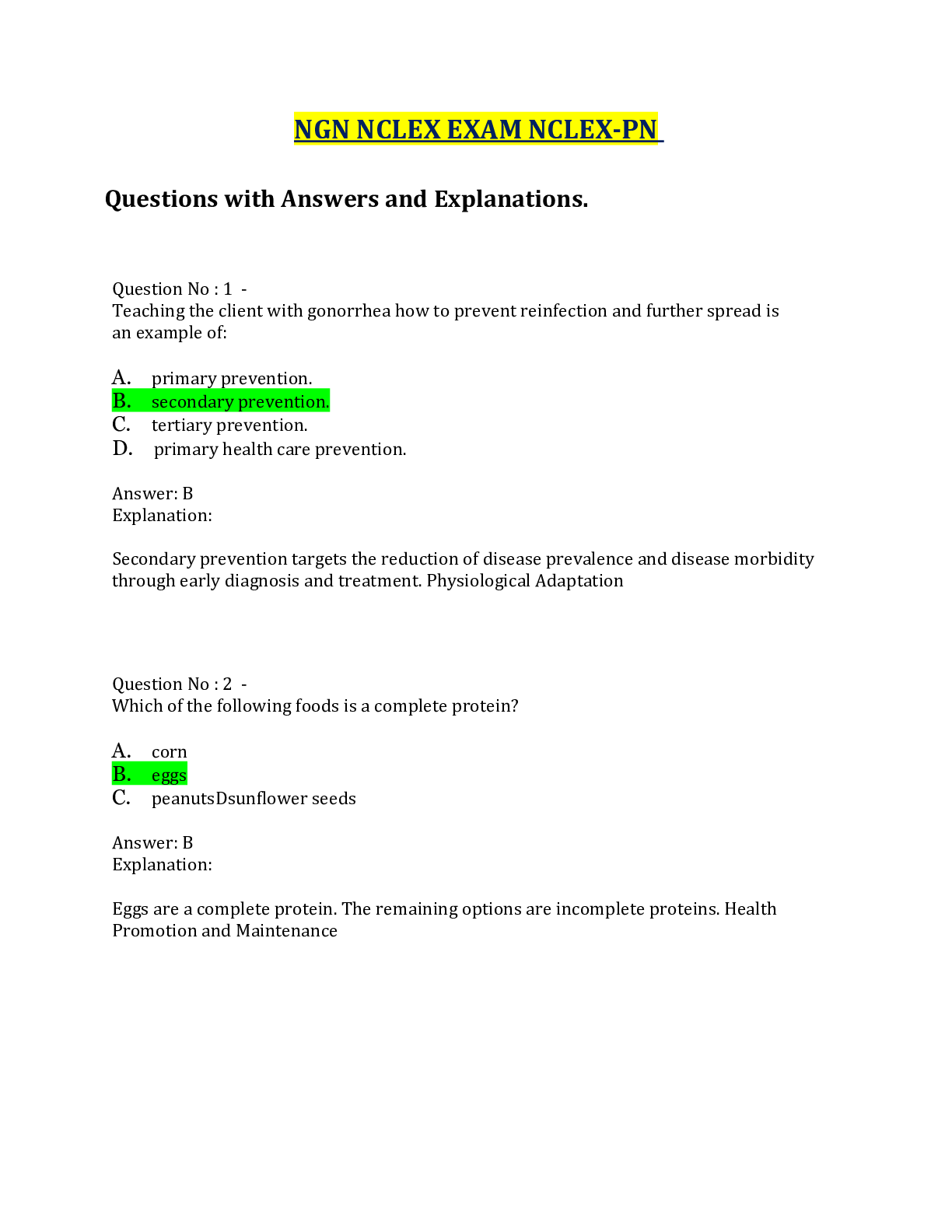

 JN21.png)
